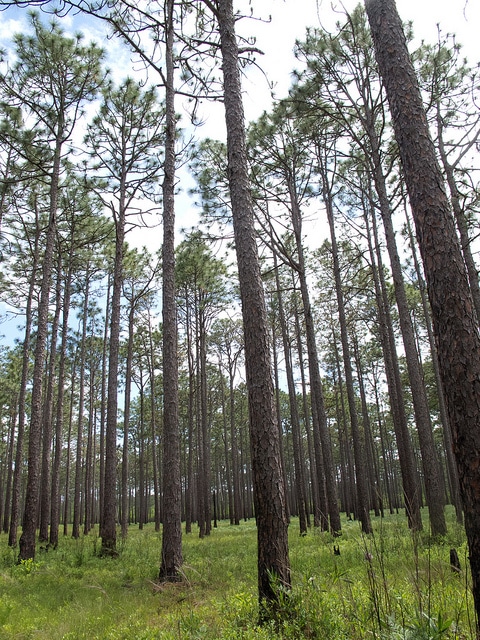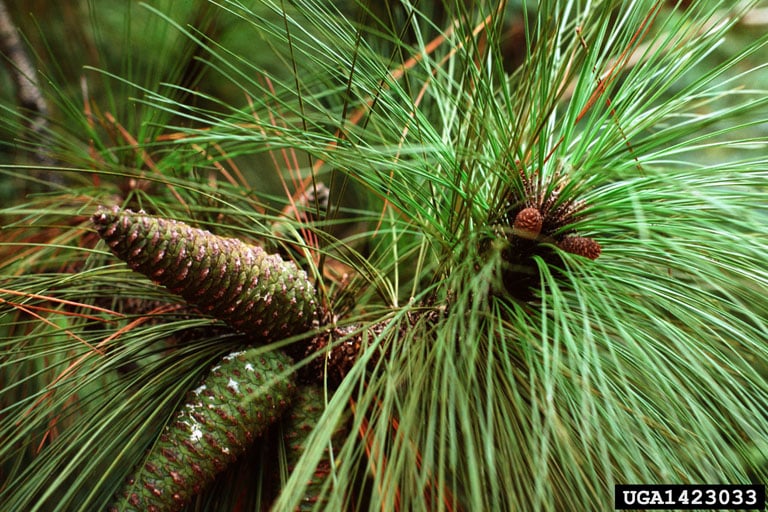Question
Once Upon A Tree
Let's think about what what we know about a tree in general. Complete the Observe a Tree exercise below to start coming up with good questions!
Compare your tree to the longleaf pine tree
Now that you have made some careful observations of your tree, let's compare it to the longleaf pine tree. What did you observe that is similar to the longleaf pine tree? What is different?

The longleaf pine tree has the same general structure as the tree you observed, but its traits are distinct. The trunk or stem of the longleaf pine is very tall and straight, reaching more than 100 feet in height when it's fully grown. These trees don't grow many branches and they tend to grow up towards the top of the tree, or it's crown. The bark of the longleaf is very thick and rough which is important for survival in fires. The longleaf pine is a coniferous tree, which means that instead of growing leaves and flowers like a deciduous tree, it grows very long waxy needles that tend to grow in clusters of two or three that stay green year-round. And instead of growing seeds as a flower that turns into fruit, the seeds of the longleaf pine tree are found in the cones! The roots of a longleaf pine tree tend to grow deep into the ground to reach water.


Did you know that the longleaf pine tree is considered an endangered species? That means that scientists are concerned it might disappear forever if we don't do something.
What makes the longleaf forest and ecosystem special?
One tree alone is pretty cool, but the community of trees - a forest - is where the magic of an ecosystem - the community of life - happens! Watch the first segment to this film - Secrets of the Longleaf Pine - to get a glimpse into the amazing community of plants and animals or ecosystem that thrives in a healthy longleaf pine forest.
